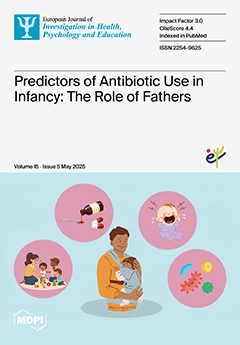Workplace psychosocial hazards pose significant risks to the well-being of health workers (HWs). This study aimed to explore the levels of psychosocial factors experienced by Chinese and international workers and examine associations between psychosocial factors, health-related outcomes (mental problems and general health), and
[...] Read more.
Workplace psychosocial hazards pose significant risks to the well-being of health workers (HWs). This study aimed to explore the levels of psychosocial factors experienced by Chinese and international workers and examine associations between psychosocial factors, health-related outcomes (mental problems and general health), and turnover intention across various occupational stages. A cross-sectional study was conducted using stratified cluster sampling methods at four hospitals in southern China. Psychosocial factors, mental health, general health, and turnover intention were assessed using the Chinese version of the Copenhagen Psychosocial Questionnaire III. Multivariate linear and logistic regression analyses were conducted. A total of 1054 HWs participated in this study (response rate: 80.21%). Compared to international samples, Chinese HWs showed significant differences in nine psychosocial dimensions, particularly interpersonal relations, leadership, and the work–individual interface. Senior hospital managers reported significantly higher stress (51.09 ± 23.88,
p < 0.001), sleep troubles (53.26 ± 24.92,
p = 0.003), and poorer general health (57.61 ± 37.26,
p = 0.035) than other occupational stages. Work–life conflict (
β = 0.172), emotional demands (
β = 0.132), and role clarity (
β = −0.132) were the strongest predictors of mental health issues. Hiding emotions demands (
β = −0.141) and leadership quality (
β = 0.130) most strongly predicted general health. The turnover intention rate was 11.01%, with job satisfaction (
OR = 0.964) being the strongest negative predictor. Reducing psychosocial stressors, particularly in work–life balance, role clarity, emotional demand, and leadership quality, could improve HWs’ well-being and reduce turnover intention.
Full article






